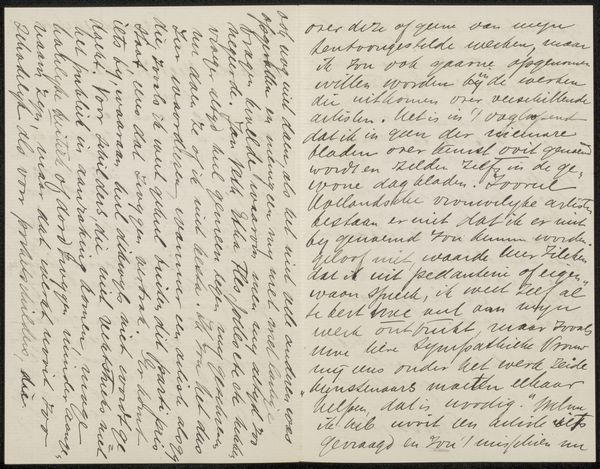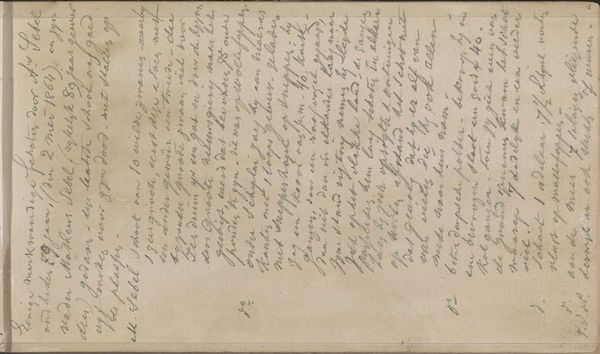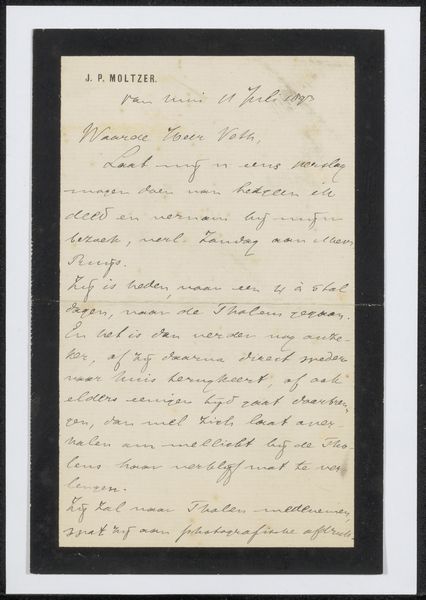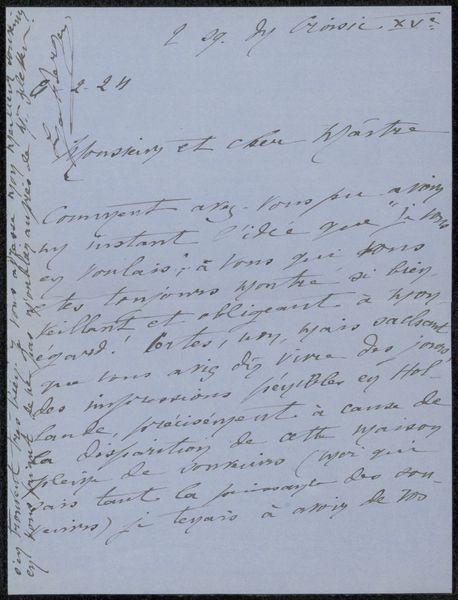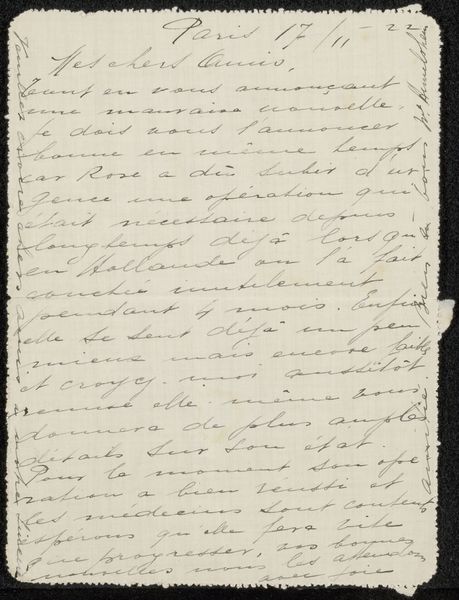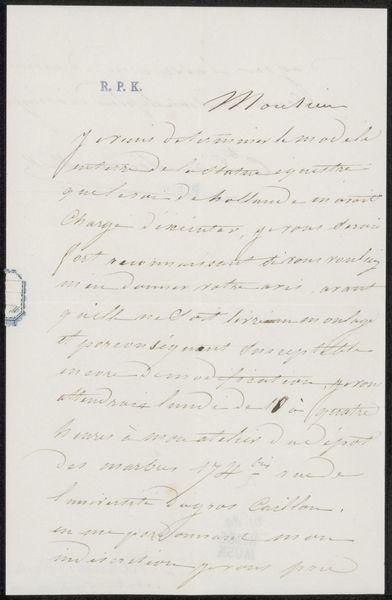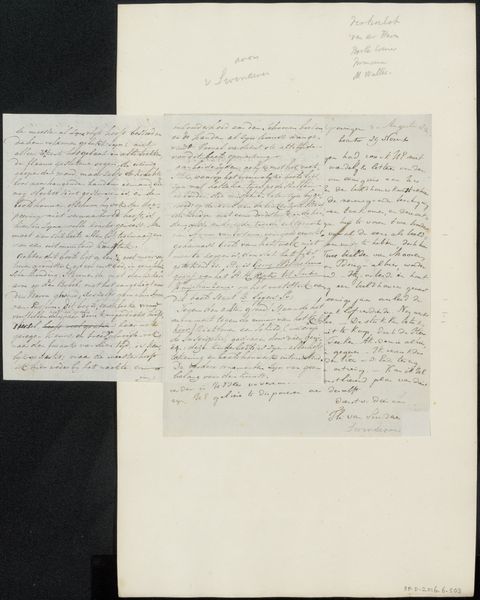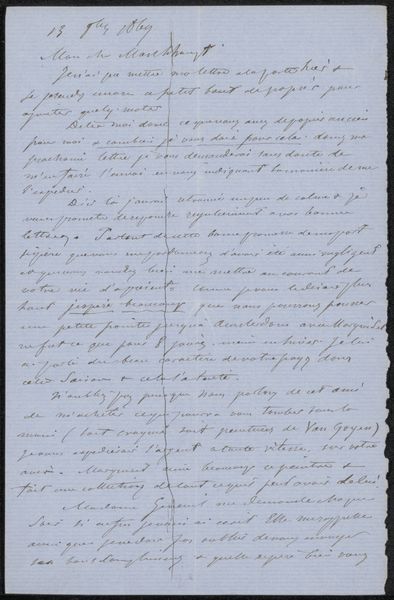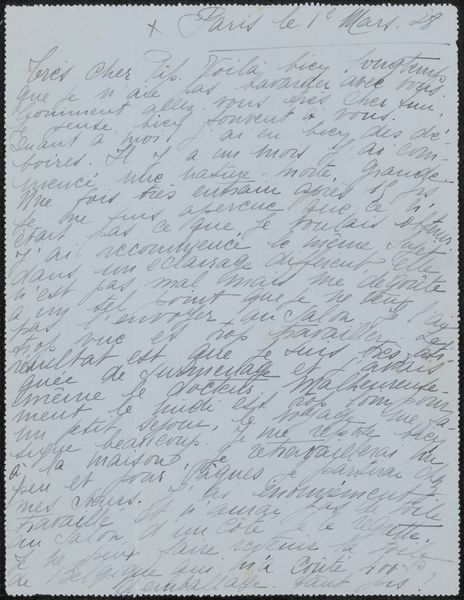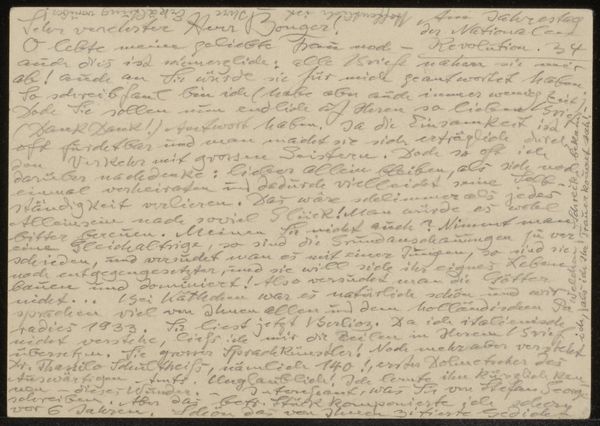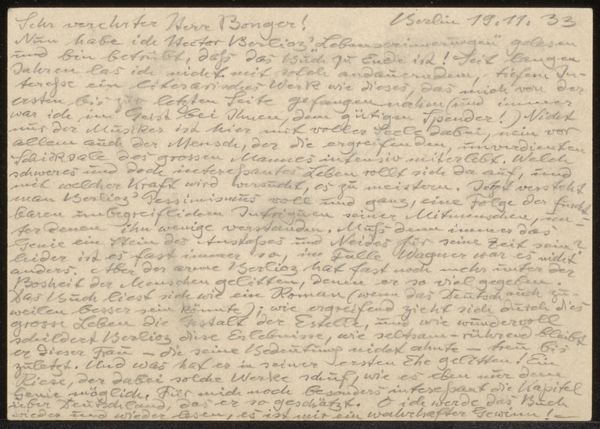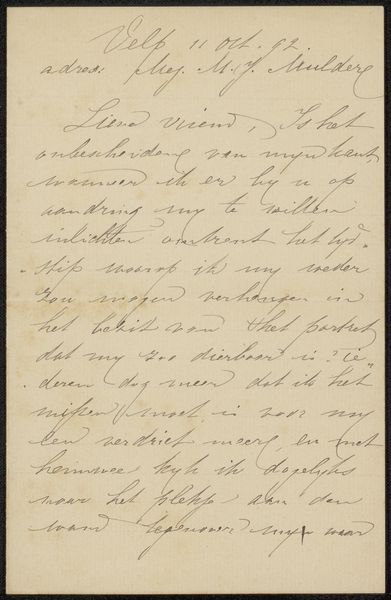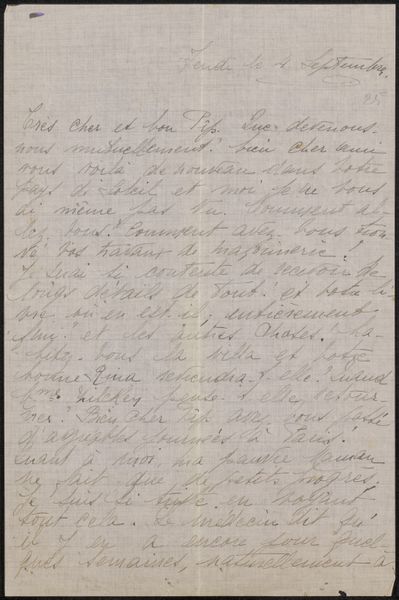
drawing, paper, ink
#
drawing
#
paper
#
ink
#
calligraphy
Copyright: Rijks Museum: Open Domain
Curator: This handwritten document at the Rijksmuseum is listed as a "Handschrift betreffende Jacques Jordaens," dating from after 1611. It's ink on paper. Editor: It looks very bureaucratic. I’m immediately struck by how official the handwriting is. Even without knowing the subject, the script suggests a formal setting, labor, commerce. Curator: Indeed. Documents like these provide a fascinating glimpse into the institutional framework of the art world at the time. Consider how a single paper—the substrate, the cost of the ink, and time invested in writing—connects so many people. It’s not just Jordaens, but his patron, other painters, the messenger… It implies complex artistic networks. Editor: Precisely. I am curious, do we know what kind of paper this is? It appears thin, perhaps even handmade? The paper quality itself speaks volumes. Was it widely accessible, or reserved for a select elite? That, in itself, informs us of the economic disparities of that time. If it’s just a regular note, what do we know about Jacques Jordaens at this point? Is he just a random painter or already well established? The context may change the labor of preparing such letters a great deal! Curator: It's the Amsterdam Courant, and while not widely accessible, it still signifies that literacy was a developing tool and that a growing market of educated consumers was involved with artistic practice. It marks a shift in how people gained information and interacted with culture. This particular letter underscores the significance of writing in the transaction and distribution of art. It allows for greater public awareness. Editor: It does show the evolving role of textual materials in art distribution and accessibility. I think examining how things are circulated—whether objects, artworks, labor, paper, or capital—can tell us a great deal about artistic reception and society. Curator: Agreed. Viewing these textual components of art history is key, and reminds us of all of the people and forces involved in making artistic work. Editor: A brief materialist approach sheds new light on what seems to be an ordinary note, revealing wider connections, exchanges, and transactions within and beyond artistic fields.
Comments
No comments
Be the first to comment and join the conversation on the ultimate creative platform.
